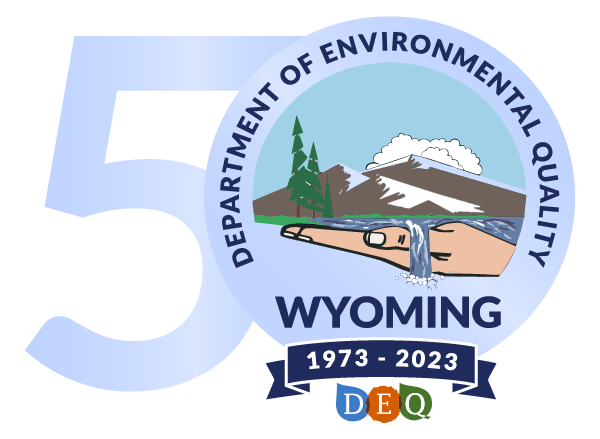By Kristine Galloway
Residents across Wyoming can rest assured that their communities will remain safe from chemical contaminants created by leaking landfills.
That’s thanks to work completed in partnership between local governments and the Wyoming Department of Environmental Quality’s Cease and Transfer Program.
The program, created in 2013 under W.S. 35-11-528, helps municipalities across the state reduce health risks to citizens and the environment that could result from leaking landfills.
“I think it’s been a very successful program,” Steve Moldt, president of the Wyoming Solid Waste and Recycling Association (WSWRA), said. “It’s accomplished exactly what we were attempting to do when they set up the legislation in the first place.”
Outside his role with WSWRA, Moldt is a consulting engineer in the solid waste field, and he helped craft the Cease and Transfer Program.
Craig McOmie, manager of the DEQ’s Cease and Transfer Program, said the DEQ discovered through landfill monitoring wells that many landfills around the state had groundwater contamination.
McOmie explained that the DEQ and the U.S. Environmental Protection Agency originally believed Wyoming was too arid for the landfills to leak leachate. Therefore, Wyoming didn’t require landfills to be lined throughout the ‘70s, ‘80s and ‘90s.
“Leachate is essentially the goo that comes out of the garbage,” McOmie said. “If you squeeze the trash bag under your kitchen sink, you’ll note that it’s got moisture in it because of food and other things.”
He explained that waste already contains water, but then rain and snow add to that moisture in landfills, creating larger amounts of leachate that could eventually make its way into wells or aquifers.
A DEQ report submitted in January 2005 to the Legislature’s Joint Minerals, Business and Economic Development Interim Committee explained the possible negative effects on residents and the environment if the leaking or potentially leaking landfills weren’t corrected.
According to the report, Landfill leachate is a toxic, noxious liquid. It contains pollutants, which can be harmful to human health, at concentrations as much as 1,000 times the drinking water standards.
One of those possible pollutants is benzene, a chemical sometimes used as an industrial solvent in paints, varnishes and gasoline. The 2005 report explains that landfill leachate typically contains about 221 micrograms of benzene per liter.
The report explained that the least costly solution for many of these unlined landfills was to close the smaller landfills and transfer waste from those communities to larger, regional landfills.
The DEQ report recommended that local governments be allowed to choose whether to line their landfills, or close them and transfer their waste, depending on their financial resources and the proximity of regional lined landfills.
McOmie said the Legislature created the DEQ’s Cease and Transfer Program in 2013 to support communities that wanted to close their landfills and build transfer stations but didn’t have the money to do so. Nearly every small community with a landfill signed up.
McOmie added that each community government is required to provide a portion of the project cost with its own money, and the Cease and Transfer Program matches that with a grant and/or loan from funds allocated by the State Loan and Investment Board. Since the program’s creation, the SLIB has awarded nearly $42 million in grants and loans to construct transfer stations and close landfills across the state.
Green River is one of 32 communities that have participated to date in the Cease and Transfer Program. The community’s new transfer station opened in January 2018.
Mark Westenskow, public works director for the city of Green River, explained that the city’s landfill was up against rock, which meant keeping the landfill open would require lining it and blasting into the rock, which they’d already done once.
The help from DEQ allowed the city to close its landfill and build a more convenient transfer station at an affordable cost. This also stabilized the cost of waste management for the city of Green River.
But Westenskow said protecting the city’s groundwater was the biggest goal.
“For us to be able to have the landfill closed, have it secure, have it in a situation where it’s going to be stable for decades and still be able to offer a convenience to our customers at the transfer station has just been a win-win for us,” he said.
The DEQ will monitor every closed landfill for at least 30 years to ensure the landfill caps are stable from settlement and that contaminants are not being released into the surrounding environment.
“We’ve saved future generations from having to deal with that environmental risk,” Moldt said. “A lot of people should be commended for seeing it through.”
McOmie said he expects Wyoming will eventually have about 17 operating landfills, including 11 regional landfills. That’s far fewer than the 52 active landfills and potential sources of groundwater pollution that existed across the state in 2014.
###
